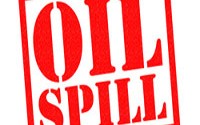Oil spills at Offshore Loading and Discharging Terminals
With the size of tankers ever on the increase, more and more operations are being required to be held offshore. Often these “mega ships” are simply too big to get into the ports they are serving. This is where technology such as Single Buoy Moorings, Multi Buoy Moorings, Floating Production Storage and Offloading and Articulated Loading Platforms are required.
With these advanced moorings to allow the loading and discharge of tankers, comes some inherent risks. These mooring platforms are often situated many miles offshore. Unlike in a port, there is no protection from the weather from structures such as breakwaters or natural bays; there is also the problem that if a spill occurs, the response time from shore authorities is a lot slower. This is not due to them being unprepared, but due to the location of the potential spill and the travel time needed to get there.
One of the more notable oil spills at an offshore facility, happened in 1998. There were two tankers, one was loading and one was discharging. The tankers were working at a Conventional Buoy Mooring, situated in Southern Europe. An unexpected storm arrived in the area, with winds reaching Beaufort force 8-9. This is not only a problem in terms of the stress on the loading equipment, but there is also the combined problem of lightning storms can cause a build up of static electricity, which can be problematic for tankers. When the storm arrived, the combined force of the wind and waves caused both tankers, one of which was offloading crude oil, and the other loading gasoline, broke free of their moorings. With the crews not expecting this to happen, the tankers ended up drifting from the mooring buoy. Unfortunately, the extreme stresses placed on the loading equipment caused the hoses to rupture, a spill of crude oil and refined oil and damage to the submarine pipes and those pipes at the terminal. The worst loss, was that of four lives on board the support vessel, due to a fire caused by the spill.
Another spill that is prominent, was that of an oil spill from an Oil Rig in the Norwegian Sector. Oil was being loaded from a shuttle tanker to the platform. The majority of discharge and loading hoses have a butterfly valve fitted at the end of the hose; in this incident, corrosion in the tanker’s loading system caused a hole to build pressure in the loading pipe. This in turn, caused the butterfly valve to snap shut in half a second, opposed to the 30 seconds it was designed to. The resulting pressure surge caused a pipe rupture.
How to prevent oil spills
There are a number of technologies available, to help try and prevent oil spills from incidents such as tanker breaker aways, pressure surges, closure of the tanker manifold or hose end and butterfly valve closures. One of these widely used pieces of technology for stopping oil spills is a Marine Breakaway Coupling. What a Marine Breakaway Coupling does, is provides a ‘safe breaking point’ in the transfer system. The MBC has a pre-set parting load, once this load is reached, the system activates and the hose is shut off at both sides and the system parts. This prevents a spill.


